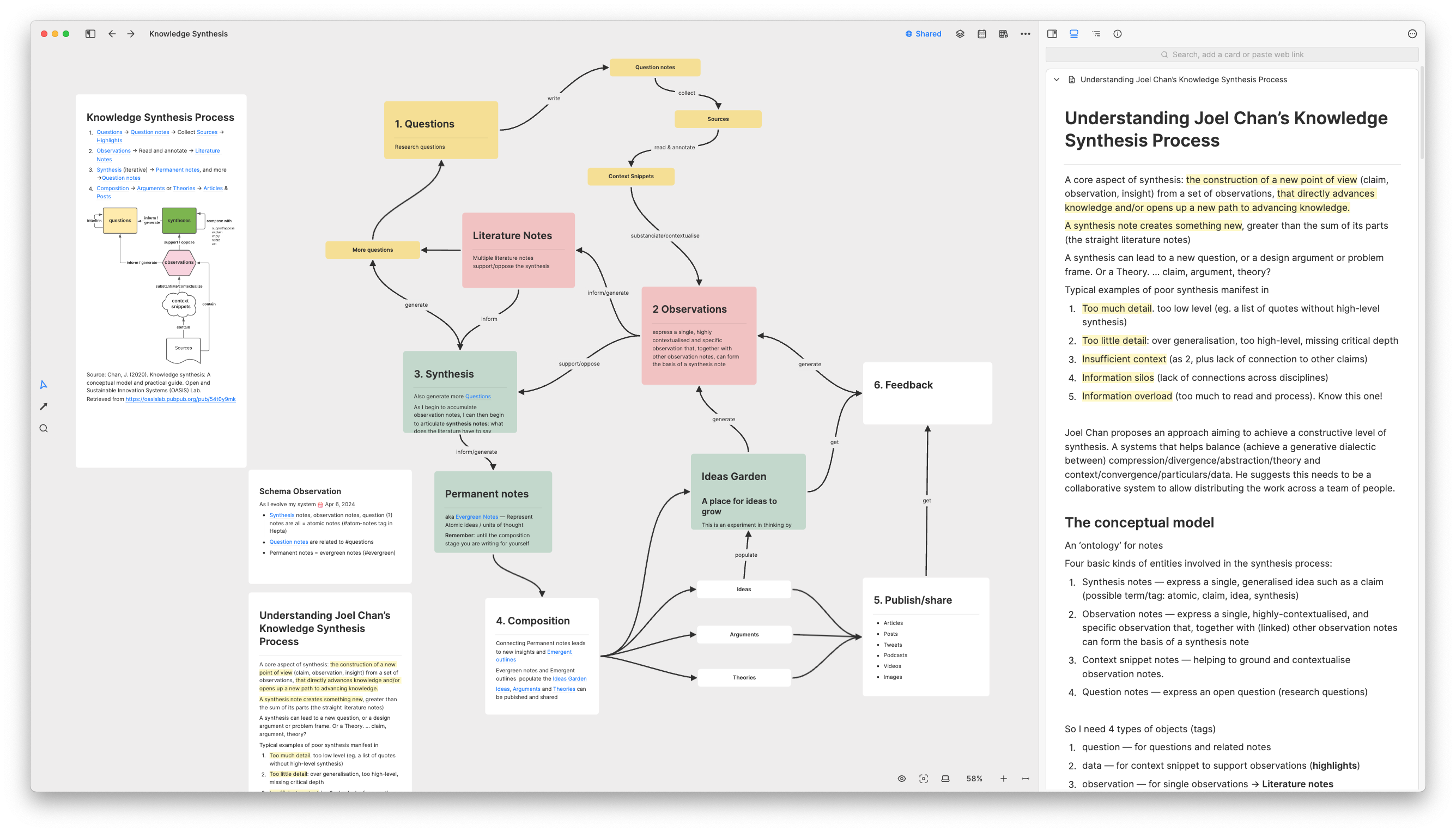Federico Gaggio
Federico Gaggio's Comments
-
-
Adding my voice here as well. Similar to the other thread which I commented here: https://ideas.tana.inc/posts/114-visual-graph-visualize-and-manipulate-my-nodes-via-a-graph-view/comments/1042
-
It would be great to know if Something like infinite canvas / visual graph / whiteboard functionality is on the cards.
I use Tana daily and love it, slowly building a system for everything I do, work-related and otherwise. But I find myself increasingly copying several nodes into Heptabase and rebuilding connections there as the whiteboard functionality is a key component of processing and connecting ideas. Then I bring what I generate back to Tana to connect it to the rest of my graph. I enclose an example of what I do with Heptabase to help me understand or develop ideas.
Heptabase is not as powerful as Tana when it comes to customising your workspace and evolving the schema or using AI, but it is quickly adding very effective components to its excellent whiteboard function, such as journaling and supertags.
I know there are many other products trying similar things, but I believe that Tana and Heptabase have the advantage in their respective strengths. At the moment I am happily paying for both but that also means a lot of work to move my data back and forth. A single environment combining the two sets of functionalities would be amazing. I'd love to hear what the Tana team is thinking about this.
-
- Newly Released Feature Feedback
- Request for feedback on Meeting agent
I love the new features in Tana Core so far, the first of which I started using extensively is the calendar integration and meeting agent. I do a lot of meetings and interviews in my work so I love the idea of integrating transcripts, meeting notes etc. But the current implementation does not work for me for a number of reasons:
- Agent joining the meeting can be an issue as per Daniel Enning comment above
- While it is very helpful to identify speakers, the transcript broken up like a chat and over several pages is very difficult to use
- Sometimes I need to check the original audio. Otter.ai and Superwhisper (both of which I have been using so far) keep the audio and link the transcript block to the relevant audio section, which makes it really simple to navigate
- Adding keywords and automatically tag them can be very useful but probably requires some configuration/more accurate prompting to avoid generating lots of unnecessary entries
Many thanks for an excellent product

That looks great. I find that kind of knowledge graph fascinating to look at — I used to love playing with it, for instance in Roam Research and later Obsidian. But what I missed — and I find most useful for creative work — is the ability to build and manipulate those relationships spatially, building the relationships by laying out and reordering ideas and images, as if I was working with cards, pictures and strings on a corkboard or post-its and markers on a whiteboard.
We think with hands and space as much as with words. This is why I prefer the Heptabase implementation at the moment, even if it does not have a full knowledge graph representation as such — prioritising build and manipulation over dynamic representation — although it has the options to visualise links and backlinks as lines between elements.
I think it's a key aspect of tools for thought, and given the interest this topics has among its users, it would be great to hear what the Tana team thinks about it.